Pictures of Gloucestershire
Exploring the most picturesque & historic places to visit in the county of Gloucestershire, England.
About the county of Gloucestershire
Gloucestershire is a fair county, she extends her borders amongst some of England's finest Cotswold towns and villages, across a landscape that changes almost imperceptibly as you travel her modern highways and ancient by-ways. It is the birthplace of the River Thames, which slowly tumbles through quiet water-meadows studded with dream-like cottages, and at her heart lies Gloucester, an important city since the Romans first wrapped it in stone walls. Within the city lies Gloucester's towering cathedral, a place of pilgrimage and prayer almost since it was first begun in 1089, and yet quite recently shots for the Harry Potter movie were filmed here, adding a modern day lustre to this gloriously ancient house of God. Along Gloucester's busy shopping streets, above a jewellers shop, light relief is brought by a colourful collection of bell ringers, representing England, Ireland, Scotland and Wales, and at centre stage, Old Father Time rings the hour. Not to be forgotten is Gloucester's canal, once a considerable port and now a place for pleasure with restored warehouses dating from Victorian times. Here there are cafe's, bars, pleasure trips and boats for hire. Somewhere for all the family is the St.James City Farm, a fascinating showcase of rare breed animals, and home of the famous Gloucester Old Spot Pigs. Visitors to the farm are invited to meet the animals which include the Saddleback Pig, Golden Guernsey Goats and loveable bunnies!
Busy Gloucester is vastly different from the elegant neighbouring Spa town of Cheltenham. This thriving town has joyous gardens and fine regency buildings decorated with graceful statues. Along its sweeping promenade are luxurious shops, and cafe's with outside tables and chairs giving the town a continental feel. A short walk from the town centre you will find Clarence Road, which in reality, is a pleasant Regency square. Nr.4, is the birthplace of renowned composer Gustav Holst, he was born here in 1874, and the house is now a museum dedicated to his life and times. The Planets, is one of his most memorable works. Another Regency gem is Cheltenham's fine Pump Room, it was built for Joseph Pitt, MP in 1825, the building occupies a lovely parkland setting close to the edge of the town. Near to Pittville Pump Room, is the race-course where the finest horse flesh in the world gathers, for what is arguably the most famous steeplechase of all, the Cheltenham Gold Cup. The course enjoyed the patronage of our late Queen Mother - the Gold Cup being an unmissable event in her diary. The idyllic grounds of Cheltenham College are stampeded each August for the Cricket Festival held in honour of W.G.Grace. The college's magnificent stone buildings make a glorious backdrop for this wonderful sporting event which first began in 1877.
Chedworth Roman Villa illustrates Gloucestershire's Roman heritage, and nearby Prinknash Abbey, once a hunting lodge belonging to the abbot of Gloucester, has a busy pottery and bird park. Cranham is a wooded village where it is often possible to see ponies roaming freely amongst the trees. From the woods there are splendid views across the counties gentle valley regions. Stroud is a place where five Cotswold valley's meet, it is a steeply rising town of quaint narrow streets with views over 'Cider with Rosie' country - the beautiful Slad valley. The town became famous for Stroud-water scarlet, a cloth used for military uniforms. Berkeley Castle is not too far distant. This is one of the oldest inhabited castles in the world, it has a bloody history which is probably only equalled by the dark and secretive deeds of Edinburgh Castle in Scotland. At Berkeley, visitors experience the drama of sinister thrills, and spills, followed by peaceful walks in sweetly scented romantic gardens. The colourful arboretum at Westonbirt with its unique collections of trees, rare flowers and shrubs is not to be missed. And it would be a crime to miss out on the delights of the lovely market town of Tetbury with its mellow houses set along broad streets which surprisingly, suddenly switch to ramshackle lanes with rising steps. The town has a beautiful 17th-century Market House supported on magnificent columns, picturesque shops and galleries.
Edging towards Gloucestershire's boundaries with Oxford lies the notable Cotswold Wildlife Park, a wonderland for everyone, with white Rhinos, big cats, Bats and much more. Diversely different, is the lovely village of Barnsley, where you can find captivating Barnsley House with gardens much admired by Prince Charles.
The ancient town of Cirencester features its Roman legacy together with rivers, wide parades of shops, boutiques, antique shops and galleries. Nearby you will find Badminton, home of the Badminton Horse Trials, and the centre of famous hunting country.
Close to Cirencester lies Kempsford, a village which developed across an important ford on the River Thames. The village is noted for its ghosts, most of whom are thought to be friendly, but include a frightened mother, a silent monk, a penitent knight and a boy in lace and breeches. For atmosphere alone Kempsford is well worth a visit. North Cerney is interesting for its mythical beast, a Manticore, half beast, half man, etched into the outer south wall of the village's 12th-century church.
To the north of Gloucester lies Tewkesbury with its evocative romantic memories of Tudor England, whose abbey walls still echo with the sounds of the men who lay dying following the Yorkists victory over the Lancastrians in a battle of the Wars of the Roses in 1471. The abbey, built as large and as splendid as any cathedral is surrounded by picturesque medieval merchant houses and a core of other ecclesiastical buildings from the past. Walking along the town's high street in spite of a parade of modern shop fronts, a glance upwards reveals the towns medieval glory. The Tudor House is preserved, so too is the splendid Hat House and the quaintly named Ancient Grudge, now an estate agents. Here the beauty of the Rivers Avon and Severn meander along sleepy, golden reeded water-meadows.
En-route for Winchcombe, home to historic Sudeley Castle, a place with Royal connections spanning almost a thousand years, which was once the home of Queen Katherine Parr, wife to Henry VIII, you pass Hailes Abbey. The abbey, mentioned in Chaucer's 'Pardoner's Tale', was a must for the pilgrims of medieval times. It was owned by a Cistercian order who traded on their ownership of a phial said to contain the Blood of Christ. However, when the abbey was dissolved, it was discovered that the fluid in the phial was fraudulent. Today, the 13th-century abbey opens as an interesting museum. Winchcombe itself is lovely, with many picturesque properties, inns and shops.
The bright, golden Cotswold stone streets of Painswick are dominated by a churchyard covered with the tombs and graves of centuries, amongst them grow clipped Yews, of which legend records that only 99 trees will grow at any one time. Behind the church is a pair of Iron stocks, one can only imagine the night-time shivers of those who were locked into them! Try the nearby Rococo gardens, they are Italianate in style, and a gardeners paradise.
Slipping westwards, Gloucestershire's borders enfold the beautiful Forest of Dean where restored Steam trains take you on a magical journey deep into the secret shaded bowers of a forest which was once the hunting ground of kings. Offa's Dyke Path, follows the snaking waters of the beautiful River Wye, and at the forest edge lie Clearwell Caves where there is an excellent visitors centre selling Ochre that is produced on site to this day. At Lydney, on the other side of the forest near to the River Severn stands Lydney Park, a lovely Victorian House with an Arts and Crafts style garden. In the grounds of Lydney Park visitors can see the Lydney Roman Temple, this covers an Iron-Age fort which has a 50ft mine shaft running below the ground. Interestingly, this site was worked upon by the author J.R.R. Tolkien who was doubtless inspired to write his famous trilogy by the endless mythical tales and legends surrounding the site. The Roman Temple is a superb vantage point for wonderful uninterrupted views towards the River Severn and beyond.
East of Gloucestershire, close to its borders with Oxfordshire there are several quintessential Cotswold villages, each unique with its own spirit, timeless charm and atmosphere. Amongst these is pretty Bibury on the River Coln. All through the year Bibury acts as a magnet for a constant stream of visitors. It has attractive steep pitched roof cottages in 17th-century Arlington Row, a trout farm overlooked by a mill with a working wheel, and a wealth of wildlife habitation on Rack Isle now a protected breeding ground for wildfowl. Mellow Northleach is notable for the fine brasses displayed in the 15th-century village church, these bear testimony to the wealthy burghers of the town during its medieval hey-day. In this part of Gloucestershire there are isolated hamlets along the rivers Windrush, Coln and Leach, at this point it is worth leaving your car to explore on foot, for here, off the beaten track there is always something fresh and special to be seen.
Quiet hamlets surround Bourton-on-the-Water, Upper and lower Slaughter and the tranquil Upper and Lower Swell. These are all worthy of a visit, they show the trickling waters of the Windrush and the River Dikler, fine Elizabethan Manor houses, mellow stone cottages, and out of the way churches. There is however nothing out of the way about Bourton-on-the-Water, this gorgeous town has everything and flaunts it! It is superbly picturesque with a series of miniature bridges crossing the gently flowing Windrush. A stone model village behind the New Inn is a popular tourist attraction; you can also visit a perfumery, fishery, bird-land, a motor museum and a pottery. This is a staggeringly beautiful place, which suffers somewhat from an endless stream of traffic down streets bordered by majestic honey stone buildings. However, its advantages far outweigh the disadvantages, and Bourton, Queen of the Cotswolds is a must for every visitor to Gloucestershire.
To travel through Gloucestershire, is to witness one of the finest landscape's England has to offer. It is a golden thread of natural history crowded with historic memories from the past, strung together in perfect harmony for the benefit of generations to come.
Recommended Towns & Villages to visit in Gloucestershire

in the county of Gloucestershire
Leafy lanes, tree lined roads and thatched country cottages form the character of this delightful hamlet through which an infant river Thames courses on its way through the lovely Cotswolds...

a Picturesque Village in the county of Gloucestershire
A picturesque village..
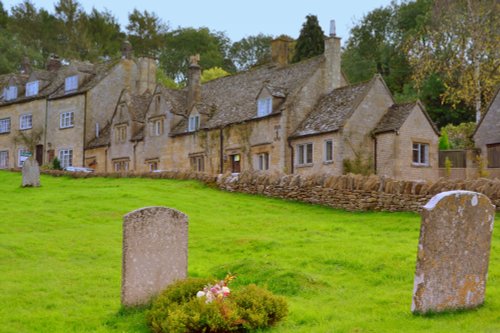
a Picturesque Village in the county of Gloucestershire
For anyone looking for a peaceful retreat in which to spend a few idyllic days in glorious countryside, could do no better that visit the picturesque village of Snowshill, high on the Cotswold escarpment above Broadway and the old town of Evesham...
Picturesque Villages in GloucestershireHistoric Market Towns in GloucestershireAll Gloucestershire towns & villagesAll towns in England
Recommended Attractions to visit in Gloucestershire

This wonderful historic castle standing a short distance inland from the River Severn estuary has long been associated with the.....
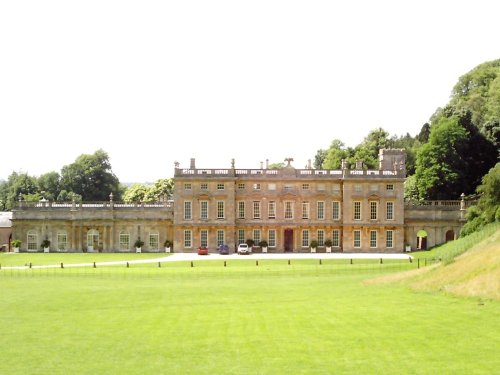
This engaging house sits serenely in a beautiful wooded Gloucestershire valley, surrounded by an old deer park. It is built of.....

Painswick is a beautiful Cotswold village of mellow golden stone. It is renowned not simply for its Cotswold beauty, but also.....
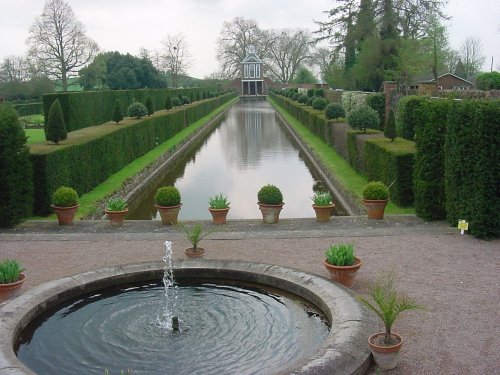
Only restored Dutch water garden in the country, and reputedly home to England's oldest evergreen oak...
All Gloucestershire AttractionsAll England Attractions
Gloucestershire Articles
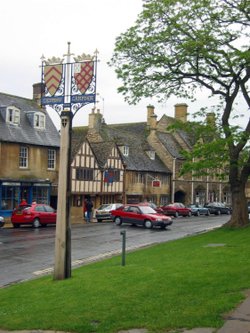
Traditional Gloucestershire
Added by John Ravenscroft
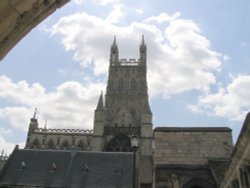
Gloucestershire Churches
Added by Louise Simmons
All articles about Gloucestershire








